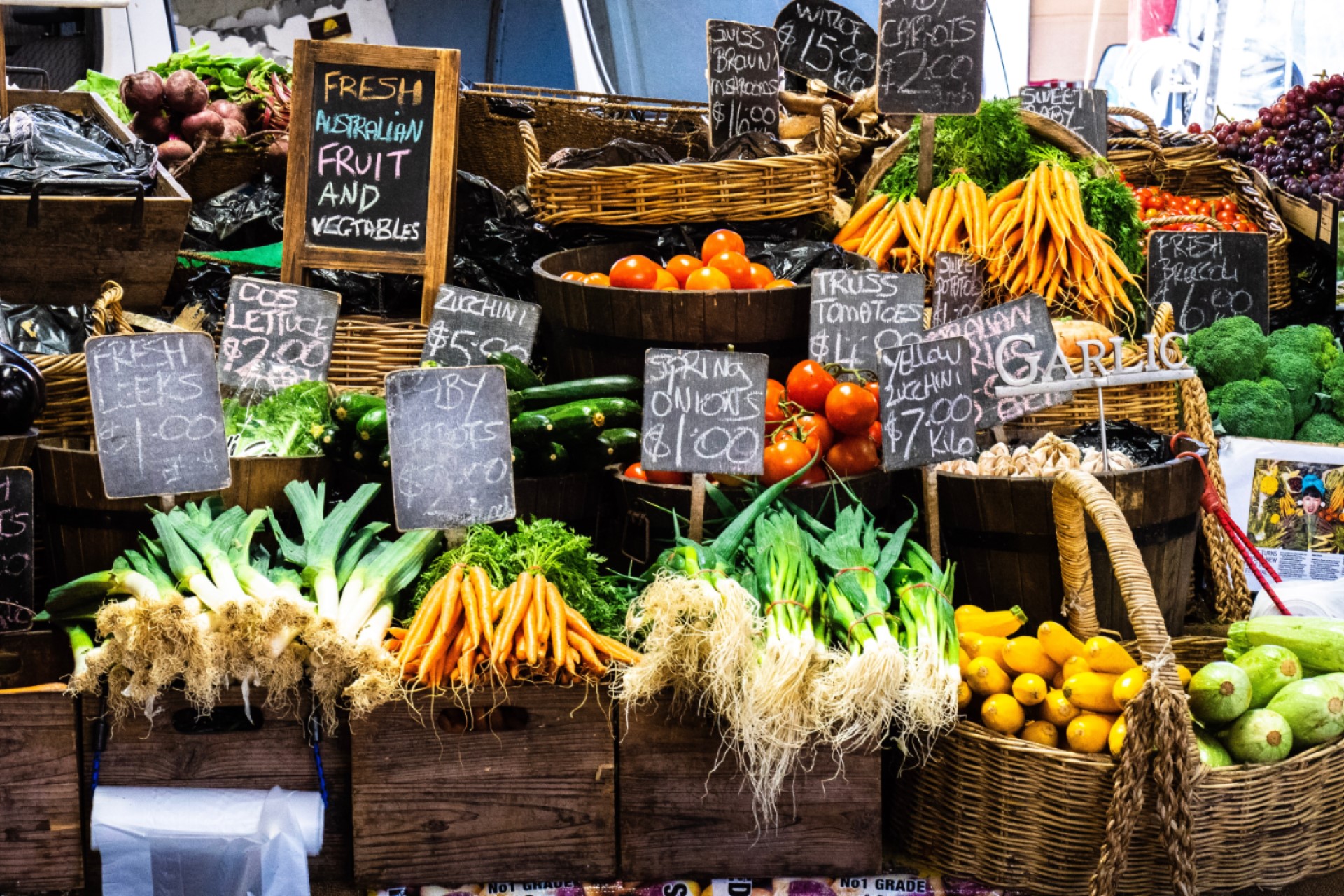
How to Start a Farmers Market
We are reader-supported. When you buy through links on our site, we may earn affiliate commission.
How to start a farmers market? Creating a farmers market is an exciting venture filled with a promise of community, fresh produce and entrepreneurial spirit.
A farmers market is a designated physical space where local farmers, growers and artisans gather to sell their produce, goods and crafts directly to the community. These markets provide a platform for farmers to connect with consumers, offering fresh, locally-produced items such as fruits, vegetables, meats, dairy products and handmade crafts.
History of Farmers Market
Farmers markets have a rich history dating back to ancient times. They have roots in ancient market traditions where farmers and producers would gather to sell their goods in open-air markets. These markets were essential for communities to access fresh produce and locally crafted items.
Farmers markets supplied urban populations with fresh, seasonal foods during the Medieval and Renaissance periods. Markets often took place in central squares or designated marketplaces.
In the early to mid-20th century, the rise of supermarkets and changes in transportation led to a decline in the prominence of farmers markets. Many consumers turned to larger grocery stores for convenience.
However, starting in the late 20th century and continuing into the 21st century, there has been a resurgence of interest in the farmers market. Consumers increasingly value fresh, local produce and the desire to support local farmers has led to a renaissance of farmers markets across the niche.
How to Start a Farmers Market
Starting a farmers market is an exciting journey. Here are some critical steps to creating a booming market:
Market Research and Planning
Before breaking ground, dive into thorough market research. Farmers market sales account for 23% of direct-to-consumer farmer sales, totaling $711 million in revenue.
Market research and planning for a farmers market involves a systematic approach to understanding the community, identifying potential vendors and establishing a solid foundation. Here’s a step-by-step guide:
- Understanding the community: Identify the local community’s demographics, including age groups, income levels and interests. Analyze existing shopping habits and preferences related to fresh produce and local goods.
- Identify needs and gaps: Determine what types of products are in demand and if there are gaps in the local market that a farmers market could fill. Consider conducting surveys or interviews with community members to gather insights.
- Research competitors: Identify existing farmers markets or similar ventures in the area. Assess their offerings, pricing and overall market positioning to understand the competitive landscape.
- Craft a business plan: Clearly define the goals and objectives of the farmers market. Outline the target audience, detailing who the market aims to serve. Develop a detailed financial plan, including startup costs, operating expenses and revenue projections.
Finding the Perfect Spot
When picking the right location, making a smart choice is critical. Look for places that are easy for the community to get to, where there are lots of people walking around.
Remember to check the local rules and zoning laws to ensure everything is allowed. It’s like finding the best spot for a party where everyone can join in.
Following the local rules is not just a formality—ensuring everything runs smoothly and stays legal is essential. Imagine the market as a friendly meeting point, like a hangout spot where sellers and buyers gather comfortably. That’s the vibe a well-chosen location can bring to a farmers market.
Recruiting and Selecting Vendors
Empowering local farmers and artisans involves inviting them to be part of the market. Recruiting and selecting vendors for a farmers market affects a thoughtful process to ensure a diverse and high-quality market atmosphere. Here’s a guide on how to go about it:
- Community fit: Consider the needs and preferences of the local community. Aim to bring in vendors who offer products that resonate with the community’s interests and desires.
- Product diversity: Strive for diverse products to cater to various tastes and preferences. To create a well-rounded market, include vendors offering fruits, vegetables, dairy, meats, baked goods and artisanal crafts.
- Quality standards: Establish clear quality standards for products. Ensure vendors meet or exceed these standards to maintain consistent quality throughout the market.
- Sustainability practices: Encourage vendors to adopt sustainable and eco-friendly practices. This could include using environmentally friendly packaging, practicing responsible farming methods and minimizing waste.
- Local sourcing: Prioritize vendors who source their products locally. This supports nearby farmers and emphasizes the market’s commitment to the local community.
Legal and Regulatory Compliance
Research and understand the permits and regulations governing farmers markets in the local area. For example, in Wisconsin, farmers market vendors must obtain licenses to sell items like candies, eggs and refrigerated food. Ensuring a secure and well-organized farmers market involves several key measures.
Firstly, exploring insurance options, including liability coverage, is essential to safeguard both market organizers and vendors from unforeseen incidents during market hours. Establishing apparent health and safety protocols for vendors and visitors, covering areas like food handling, sanitation and emergency procedures, contributes to a safe market environment.
Drafting comprehensive vendor agreements is crucial to clearly define rights, responsibilities, fees, booth setup and adherence to market regulations. Additionally, fostering collaboration with local government officials and health departments through regular communication aids in streamlining regulatory processes and promptly addressing any concerns.
Marketing and Promotion
Develop a marketing strategy to create awareness and attract both vendors and customers. Consistent branding across promotional materials creates a recognizable identity that resonates with the community. Here are some ideas:
- Engaging content: Create engaging content for marketing materials. Highlight stories of local farmers and artisans, showcase behind-the-scenes glimpses and share the market’s impact on the community.
- Interactive events: Plan interactive events to draw attention. Cooking demonstrations, live music or themed market days can enhance the overall market experience and attract a diverse audience.
- Collaborate with local businesses: Forge partnerships to cross-promote the market. This could involve joint marketing initiatives, shared promotional materials or special discounts for market-goers at nearby establishments.
- Community involvement: Actively involve the community in marketing efforts. Encourage locals to share their market experiences on social media, organize contests or feature customer testimonials to create a sense of community engagement.
- Seasonal campaigns: Tailor marketing campaigns to the seasons. Highlight seasonal produce, coordinate festive events and align promotional efforts with local holidays or celebrations.
Farmers Market Today
Farmers’ markets come in various forms today, from small community gatherings to larger organized markets in urban centers. They play a crucial role in promoting sustainable agriculture, supporting local economies and providing consumers with a direct connection to their food source.
These markets contribute to the economic well-being of local farmers and foster a sense of community—promoting the consumption of fresh, seasonal and locally sourced products. Its history reflects a timeless tradition of connecting people with the food they eat and the individuals who cultivate it.
Share on
Like what you read? Join other Environment.co readers!
Get the latest updates on our planet by subscribing to the Environment.co newsletter!
About the author
Jane Marsh
Starting from an early age, Jane Marsh loved all animals and became a budding environmentalist. Now, Jane works as the Editor-in-Chief of Environment.co where she covers topics related to climate policy, renewable energy, the food industry, and more.





